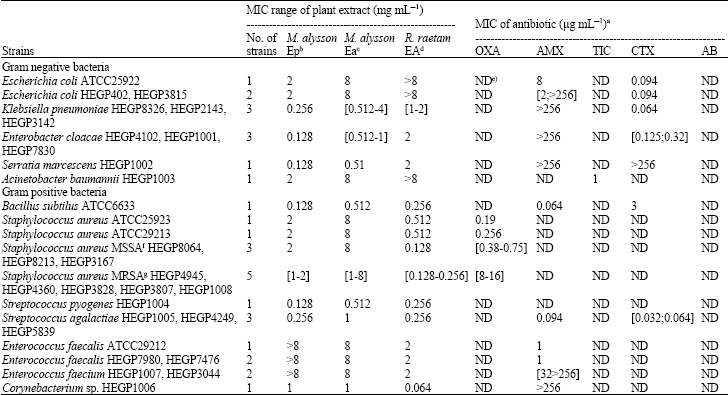Research Article
Antimicrobial and Cytotoxic Activity of Marrubium alysson and Retama raetam Grown in Tunisia
Laboratoire Des Maladies Transmissibles et Des Substances Biologiquement Actives� Faculte de Pharmacie-5000-Monastir, Tunisie
Ammar Samia
Laboratoire De Chimie Des Substances Naturelles et De Synthese Organique 99/UR/12-26 Facult6 des Sciences de Monastir, 5000 Monastir, Tunisie
Groh Patrick
Laboratoire de Microbiologie, Hopital Europeen George Pompidou, APHP, 20, Rue Leblanc 75905 Paris cedex 15, Tunisie
Mahjoub Mohamed Ali
Laboratoire De Chimie Des Substances Naturelles et De Synthese Organique 99/UR/12-26 Facult6 des Sciences de Monastir, 5000 Monastir, Tunisie
Mastouri Maha
Laboratoire de Microbiologie- Hopital Fattouma Bourguiba- 5000-Monastir, Tunisie
Gutmann Laurent
Laboratoire de Microbiologie, Hopital Europeen George Pompidou, APHP, 20, Rue Leblanc 75905 Paris cedex 15, Tunisie
Zine Mighri
Laboratoire De Chimie Des Substances Naturelles et De Synthese Organique 99/UR/12-26 Facult6 des Sciences de Monastir, 5000 Monastir, Tunisie
Aouni Mahjoub
Laboratoire Des Maladies Transmissibles et Des Substances Biologiquement Actives� Faculte de Pharmacie-5000-Monastir, Tunisie











